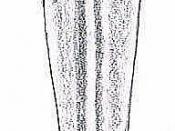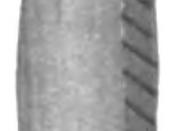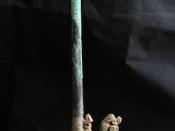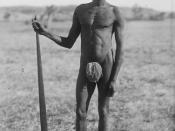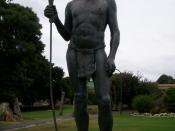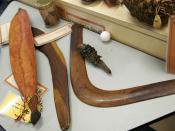Thousands of years ago, the indigenous Aboriginals of Australia collected food and were hunting in order to survive. To take some effort out of hunting, the Aboriginals invented some labour-saving technology. These included devices like the spear thrower and the throwing stick which made sure that the energy gained form eating the food was greater than the energy used in hunting for it.
Spear thrower
A spear thrower is a stick used to help propel the spear with greater force for a longer time. The basic design of the spear thrower was alike in many indigenous groups, though they called it different things. In New South Wales it was known as the Woomera, and in Western Australia, a Mirr. Spear throwers are made out of hard wood and usually 45cm to 50cm long. There is a carefully shaped handle at one end, and a hook-like peg at the other end where the butt end of the spear fits in.
Using a spear thrower, you can get two to three times the distance you could throw without using one.
Depending on where it was developed, the shape of the spear thrower varies. Modification of the shape lets the spear be able to be used for other purposes, such as a water scoop, a digging stick or a simple axe.
Spear throwers work according to the principle of levers. It uses two levers to launch the spear. Both levers act as speed multipliers, increasing the speed of the spear compared to the speed of the thrower's arm.
The first lever has its load at the hand and its fulcrum at the shoulder, as shown in diagram 1-3. This is the natural throwing lever of the arm and would be the normal lever, have the spear thrower not be used.
Diagram 3 indicates the second lever coming into action. The fulcrum is complex and involves the shoulder, hand, and the hook-like point where the spear attaches to the spear thrower.
For the spear thrower to be used effectively, as the arm reaches the normal release point (like when you're throwing a ball), it is swept down very quickly. This causes the top of the spear thrower to travel rapidly, acting like an extension of the arm. The second movement, where the end of the spear thrower effectively increases the speed of the hand, allows the force to apply to the spear for longer than it would without a spear thrower.
The reason why the spear travels faster using a spear thrower, than if it were hand thrown is because the extension of the throwing arm provides more leverage, as the spear thrower moves faster than the hand holding it. Opportunistically, the spear thrower increases the arm length of the user and therefore creates more power.
The boomerang- throwing sticks
The returning boomerang originated from specially shaped sticks used for hunting. There are many forms of boomerang-like throwing sticks that were used by different indigenous tribes. These throwing sticks were carefully shaped according to the purpose they were going to serve as well as the prey they were going to be used to hunt.
The things that give rise to the different flight paths they follow when thrown are the different curvature of the surfaces and the shape of the boomerang. One surface is flat, while the other is curved into the shape of an air foil (just like a wing). This is the reason there are right-handed and left-handed boomerangs, and why boomerangs can 'hover' for some time in the air.
A boomerang returns because of the lift created by the combination of lift created by the wings being deflected by the winds, and the 'gyroscopic' forces created by the rapidly rotating boomerang.
Bibliography
Spear thrower
www.msu.edu/~doneycar/atlatl
www.eduplace.com/ss/hmss/6/lam/dar.html
www.flight-toys.com/artifacts/tb07.html
abroere.xs4all.nl/pnp/K_SpearThrower
www.metmuseum.org/toah/ho/10/oca/ho_1978.412.837.htm
katihugs.zaadz.com/blog/2006/7/the_spear_thrower
Throwing stick
http://www.coloradoboomerangs.com/why.html
